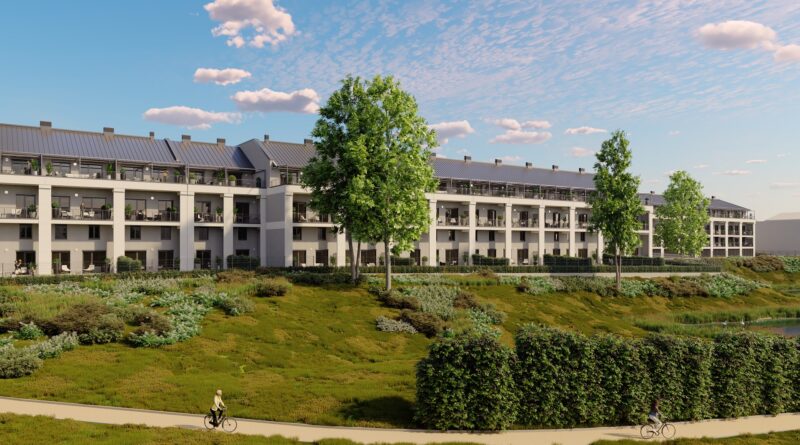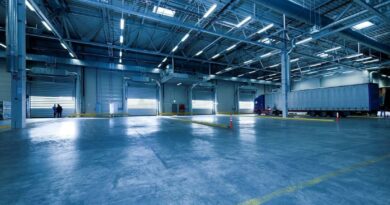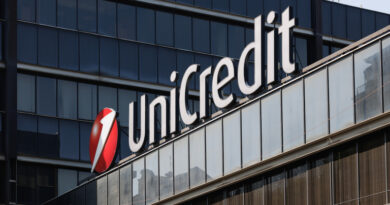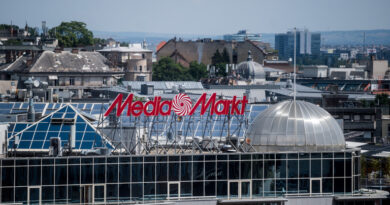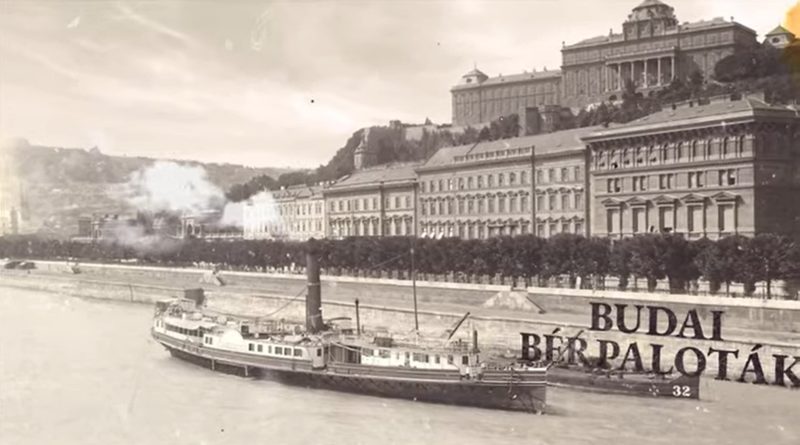New areas gaining ground in the Budapest office market
After the saturation of Váci út, the next successful area for the office building wave could be the Hungária ring. “Signs of this process are already shown,” said CPB Hungária Kft. managing director László Rhédey. Rhédey believes that development of the new subway line could give momentum to the western section of the 11th district.
While oversupply is clearly apparent in the market, office development continues in different parts of the capital city. Is there demand in Budapest?
Yes, I am convinced that there is demand. In terms of square meters per capita, Hungary lags well behind Western European countries and, as far as I can see, apart from the two million square meters already completed, one million more could be sold in the market. If we look into it, there is demand for high-quality modern offices, and this will be so for a long time. Market fluctuations are natural, and construction sometimes stops because of oversupply. Then developers look for new opportunities, start ever more projects, and dynamics slow down again. Developments are gaining momentum now, and there will be many office buildings handed over at the end of 2006 and at the beginning of 2007. This tendency will continue into 2008. Smaller projects and larger ones are underway, as investors try and meet the customers’ requirements in one fashion or another. In the next two years, the total modern office area in Budapest will grow by approximately 500,000 square meters.
But under the present market circumstances, this space is not likely to be sold immediately. What are your expectations concerning the number of rental contracts investors might achieve?
In the period mentioned, 400,000 square meters are expected to be contracted by owners and tenants. Renegotiation, extension and other similar agreements are of course included, as we have to understand that rented area does not necessarily mean newly built areas to be occupied by new tenants. It simply means that so much is the newly contracted total office area, whether it has been already rented or still vacant. By the way, all companies require modern offices meeting all expectations, but the issue of how much they are willing to pay and whether they are ready to move in is a much more complicated question.
What can be considered a star area in Budapest? Can Váci út keep its leading role?
Váci út has been so far an exceptional area indeed, and according to my experience, managers looking for future premises still bear this place in mind and want to work there. At the same time, we have to recognize that the area is already very saturated, and when the projects such as Átrium Park, Váci út 33 and many others are completed, there will actually be no more room there. Empty lots are nearly impossible to find, so project completions will soon come to an end in this neighborhood so favored by developers. When it comes to tenants of course, Váci út and its surroundings could still remain a much sought area, as its infrastructural opportunities are excellent, and its accessibility will be made even easier by the two northern bridges under construction. Similarly to the 13th district, the new metro line 4 can give momentum to projects in the 11th district. This, however, will not boost office development in the short run, as it takes at least five years for the influence to be felt. But it is certain that this area might be one of the next breaking points of the office market, and Kelenföldi train station and its area will develop fast in the course of some years. Transportation facilities attract investors to the western part of the 11th district, and I believe that the area is about to start a period of spectacular growth. In the other part of the 11th district, there are already several office buildings, but I would not judge that the Danube bank, Lágymányos and Budafoki street are as successful as many expected. Many old buildings have been revitalized there, but residential and office functions get confused, and meanwhile new office buildings replace previous industrial sites, infrastructural developments do not follow the trend. Public transportation cannot meet the current requirements as it is still not of an acceptable standard, and improvements cannot be expected. The Budapest municipality as well as the district authorities and the real estate developers must find a new solution to this problem, because until the area is accessible by other means than private vehicle, office buildings and the area itself cannot function properly. As long as the area is characterised by a poor road network and poor public transportation, it will not be attractive for companies.
What about the other side of the Danube?
If we look right at the opposite side of the river, we can find good examples. Soroksári út, the northern part of Csepel Island, and inner Ferencváros have already raised investor interest. Ferencváros has particularly developed much in the past ten years. Polus Center was the flagship project on Könyves Kálmán körút, but the 11th district area near the Danube keeps on developing, to mention only one example, the Haller Kert under construction. As the 13th district is about to become saturated, the Hungária ring gains importance, and in my opinion, the area might be the high-priority sector for future development. There are visible signs of that, as from both sides, big projects have started: The two towers next to Árpád Bridge and Népliget Center are outstanding examples for their very dimensions.
The developer of the latter project, Skanska, has recently bought the lot previously owned by BKV (Budapest Transportation Company) next to the M5 highway ramp.
Yes, there will be a new office building built there, but more and more investors see possibilities in one or another section of the Hungária ring. Their good judgment is proven by the fact that in the middle of the ring, the Raiffeisen Ingatlan project, the Arena Center, is doing fine, as its site is outspokenly ideal. So there are ever more developments expected to be completed on that very semicircle. But I would not forget about the inner Buda areas either, as their success is always guaranteed by the good transportation possibilities. There is an area there that I would not have imagined could meet the related expectations: Szépvölgyi road and its neighborhood. Both Szépvölgyi Business Park and Szépvölgyi Office Park, located on the border of the 2nd and the 3rd districts, have been rented unexpectedly fast, and companies were pleased to move there. It was probably because the offices are easily accessible for those coming from Buda, and most company managers prefer not to cross a Danube bridge in the mornings.
You have said that there will be more demand for modern offices in Budapest, but what about old buildings?
Eight to ten years ago, at the time of the Budapest office development craze, the characteristic method was not conscious project planning, as developers constructed buildings on the vacant lots they could find between two existing buildings. They did not care about what the ideal site might be. Of course, in spite of all that, some of those buildings are still in a perfect location, for instance the Central Business Center in Horvát utca, but we have to remember that developments which were at that time very up-to-date are quite obsolete now. What seemed to be very modern a decade ago is far from advanced today. Those buildings have technological solutions that can hardly be acceptable for current tenants. It is interesting however, that in those very buildings, extremely high rental rates are quite common, and in the contracts signed five years ago, even a price of €16 can be found, which is absolutely expensive for a square meter in a building not really up-to-date. These contracts are currently being renegotiated by tenants and owners, and if tenants are otherwise pleased with the building in all aspects, they will agree with the owner upon a price of €12.5-13.5 for the next period. And there are also clearly obsolete but very well located buildings which are ready to undergo a thorough renovation. If there is no restaurant in them, there must be one. Their halls should be reshaped, in order tenants and their customers can enter in a modern and attractive environment. The façade must be renovated, and in some cases, the elevator also should be modernized. But standards change in other terms, too: some time ago for instance, suspended ceilings with panels were very up-to-date, but today they are not applied anymore. Suspended floors, however, came into fashion. Furthermore, some office buildings, well known to lag behind their modern competitors, are still popular among renters, for example, the EMKE Irodaház next to Blaha Lujza tér, which is full, because companies – although not the really big ones – very much like to move there. It is further proof that owners have a high responsibility, as it is their duty to find a philosophy for their buildings. Not every building can be sold with the same slogan, and in each case a special feature must be highlighted to attract customers.
That cannot be easy when it comes to buildings completed several decades ago, as they have only one advantage, the rental fee. What is the future of these buildings?
Office buildings completed in the 1970s and 80s are not able to meet the requirements of modern times. Therefore they should not be repaired occasionally, but deconstructed structurally once and for all, and then rebuilt completely to be up-to-date in every respect. An office building, modern from all points of view, can remain of high standard for 50 years at most, and that period is getting ever shorter. Hence, for tough step it might seem, a total renovation must be carried out, otherwise the building will simply become empty.

